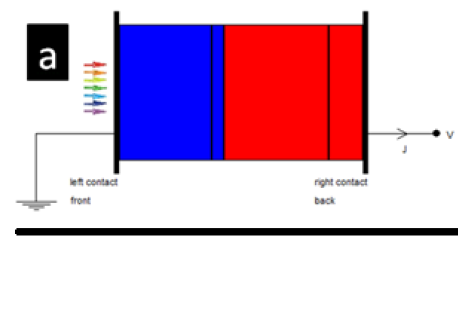Simulation and Optimization of Lead-Based Perovskite Solar Cells with Cuprous Oxide as a P-type Inorganic Layer
Keywords:
Perovskite solar cells, inorganic HTM, device simulation, cuprous oxide, defect densityAbstract
The hole transporting material (HTM) is responsible for selectively transporting holes and blocking electrons which also plays a crucial role in the efficiency and stability of perovskite solar cells (PSCs). Spiro-MeOTAD is the most popular material, which is expensive and can be easily affected by moisture content. There is a need to find an alternative HTM with sufficiently high resistance to moisture content. In this paper, the influence of some parameters with cuprous oxide (Cu2O) as HTM was investigated using a solar cell capacitance simulator (SCAPS). These include the influence of doping concentration and thickness of the absorber layer, the effect of thickness of ETM and HTM as well as electron affinities of ETM and HTM on the performance of the PSCs. From the obtained results, it was found that the concentration of dopant in the absorber layer, the thickness of ETM and HTM and the electron affinity of HTM and ETM affect the performance of the solar cell. The cell performance improves greatly with the reduction of ETM electron affinity and its thickness. Upon optimization of parameters, power conversion efficiency for this device was found to be 20.42% with a current density of 22.26 mAcm-2, voltage of 1.12 V, and fill factor of 82.20%. The optimized device demonstrates an enhancement of 58.80%, 2.25%, 20.40% and 30.23% in PCE, Jsc, FF, and Voc over the initial cell. The results show that Cu2O in lead-based PSC as HTM is an efficient system and an alternative to spiro-MeOTAD.

Published
How to Cite
Issue
Section
Copyright (c) 2019 Journal of the Nigerian Society of Physical Sciences

This work is licensed under a Creative Commons Attribution 4.0 International License.







